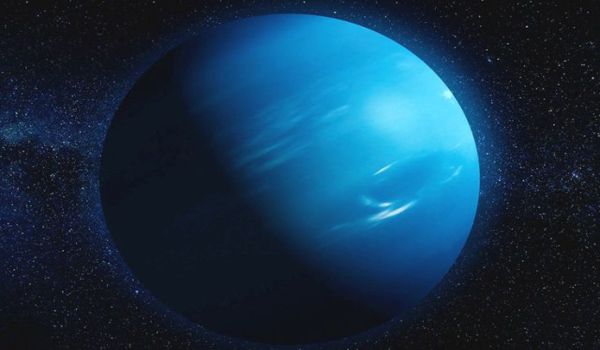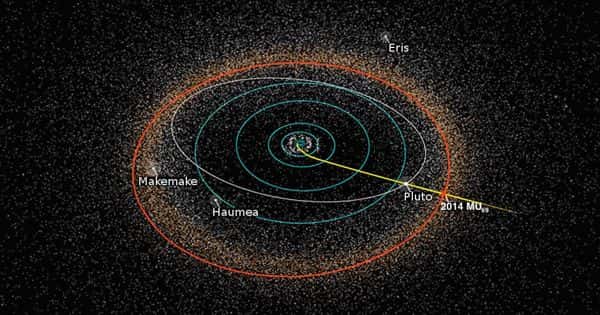An extreme trans-Neptunian object (ETNO) is a trans-Neptunian object that orbits the Sun well beyond Neptune (30 AU) in the Solar System’s outermost region. A large semi-major axis of at least 150–250 AU characterizes an ETNO. Its orbit is much less influenced by the known giant planets than the orbits of all other known trans-Neptunian objects. They could, however, be influenced by gravitational interactions with a fictitious Planet Nine, shepherding these objects into similar orbits.
The known ETNOs show a highly statistically significant asymmetry between the distributions of object pairs with small ascending and descending nodal distances, which could be a response to external perturbations.
Scientists recently discovered two groups of TNOs with distinct surface colors and orbital patterns. The research, led by Mohamad Ali-Dib, a research scientist at the NYU Abu Dhabi Center for Astro, Particle, and Planetary Physics, paves the way for a better understanding of how the Kuiper Belt formed in the first place.
Trans-Neptunian Objects (TNOs), small objects that orbit the sun beyond Neptune, are fossils from the early days of the solar system which can tell us a lot about its formation and evolution.
A new study led by Mohamad Ali-Dib, a research scientist at the NYU Abu Dhabi Center for Astro, Particle, and Planetary Physics, reports a significant discovery: two groups of TNOs with different surface colors have very different orbital patterns. This new information can be compared to solar system models to gain new insights into the solar system’s early chemistry. Furthermore, this discovery opens the door to a better understanding of the formation of the Kuiper Belt, a region beyond Neptune made up of icy objects that is also the origin of some comets.
The scientists described how they investigated the chemical composition of these objects in order to understand the dynamic history of the Kuiper Belt in their research paper, which was published in the Astronomical Journal under the title “Rarity of the red-hot trans-Neptune objects in the sparse disk.” The objects that cross Neptune’s orbit are classified as “little red” or “very red” based on the colors of their surfaces.

The researchers explain how they studied the chemical composition of TNOs to understand the dynamical history of the Kuiper Belt in their paper, The rarity of very red TNOs in the scattered disk, published in The Astronomical Journal. Based on their surface colors, TNOs are classified as ‘Less Red’ (often referred to as Gray) or ‘Very Red’ (often referred to as Red). The researchers discovered that gray and red TNOs have vastly different orbital patterns by re-analyzing a 2019 data set. Additional calculations revealed that the two groups of TNOs formed in different locations, resulting in a dichotomy in both their orbits and colors.
The Kuiper Belt resembles the asteroid belt that exists between Mars and Jupiter. However, the Kuiper Belt is much larger than the asteroid belt. It starts at Neptune’s orbit, about 20 AU from the Sun, and extends out to about 50 AU. The Kuiper Belt is also known as a circumstellar disk.
The objects in the Kuiper Belt are remnants from the early days of the Solar System’s formation. The majority of Kuiper Belt Objects (KBOs) are icy objects formed from frozen volatiles such as methane and ammonia.
Many solar system models have been developed to show how the Kuiper Belt evolved, but these models only investigate the origins of its orbital structure or colors, not both at the same time.
“With more data, our team’s work could be applied to more detailed solar system models, revealing new insights about the solar system and how it has changed over time,” Ali-Dib said.















